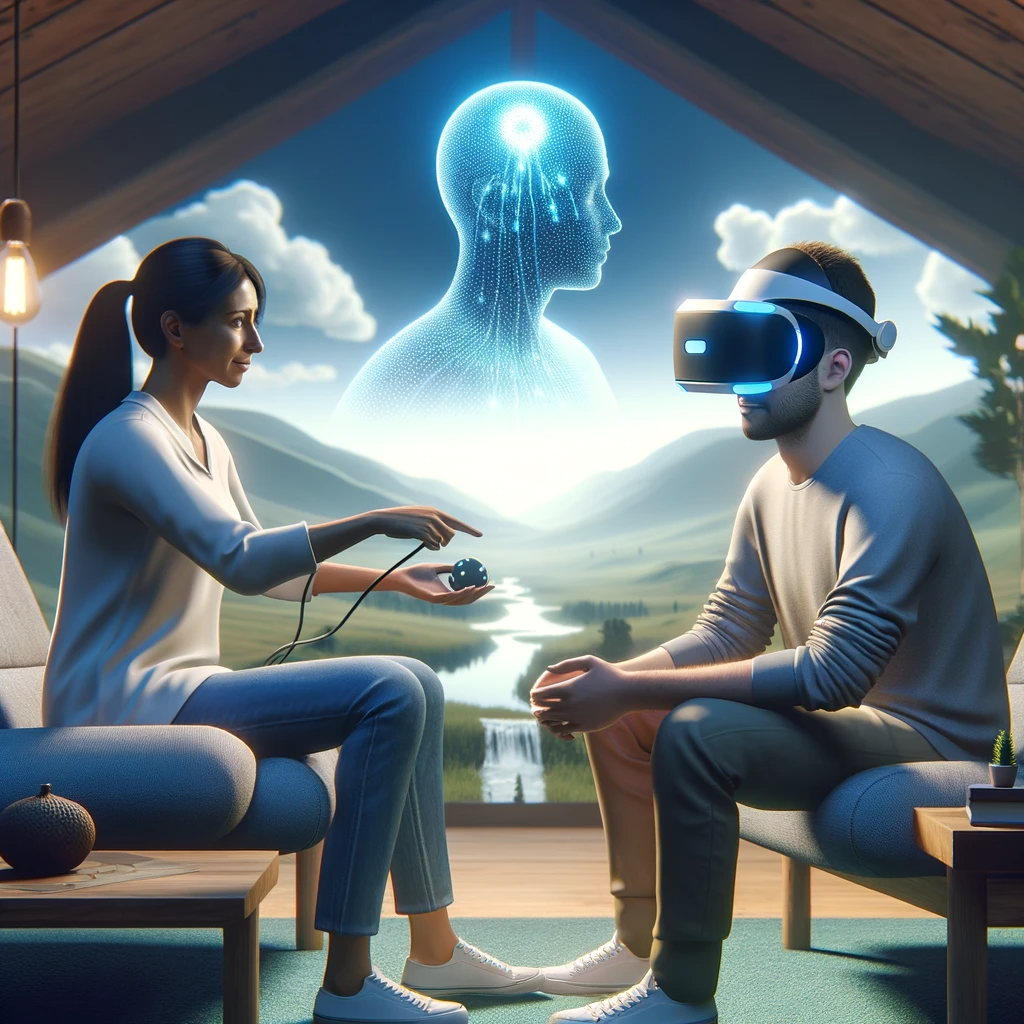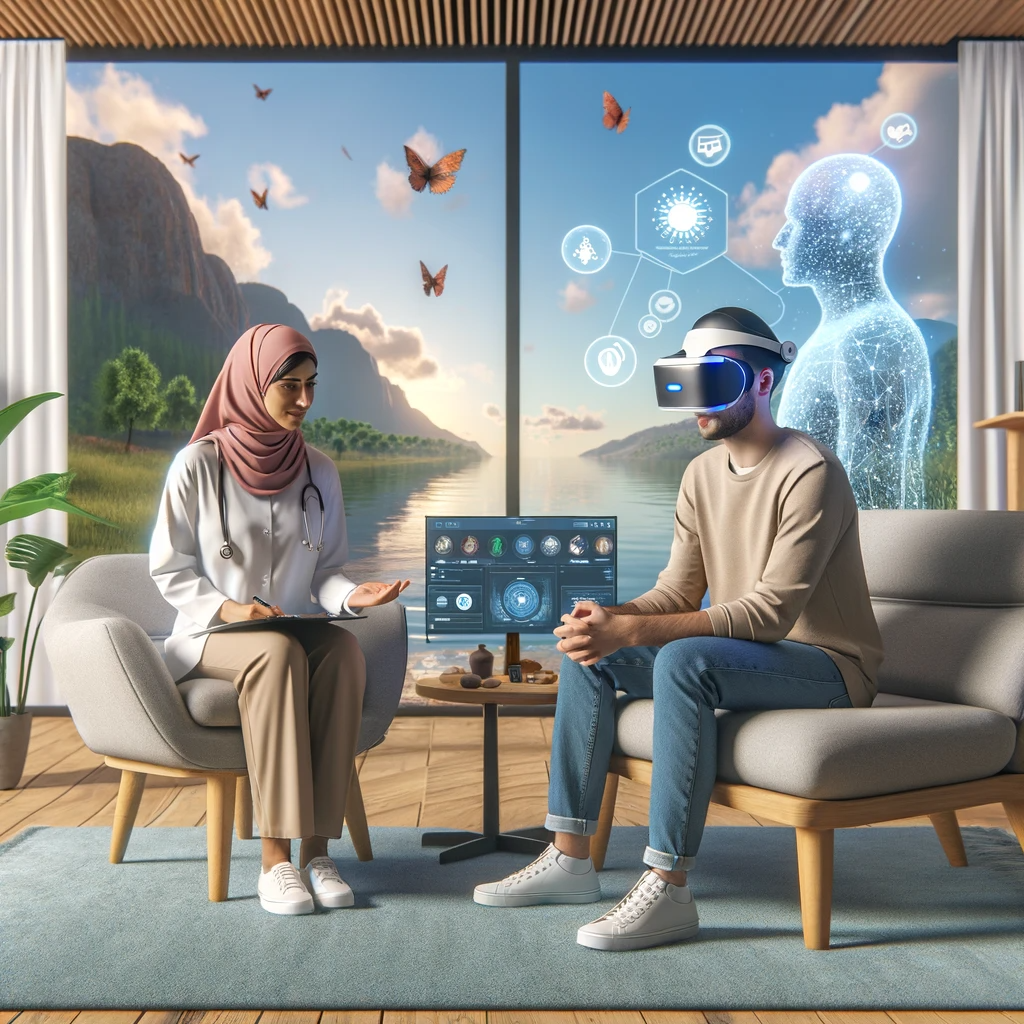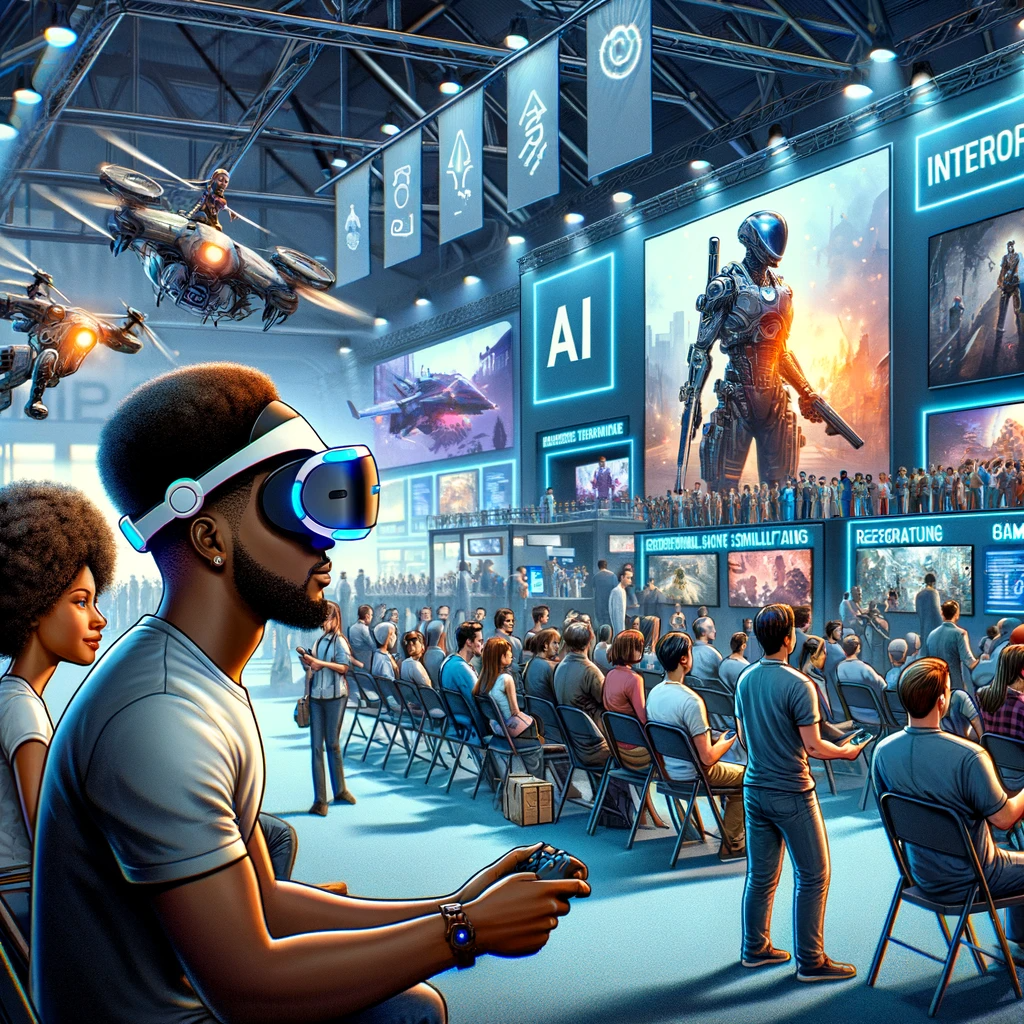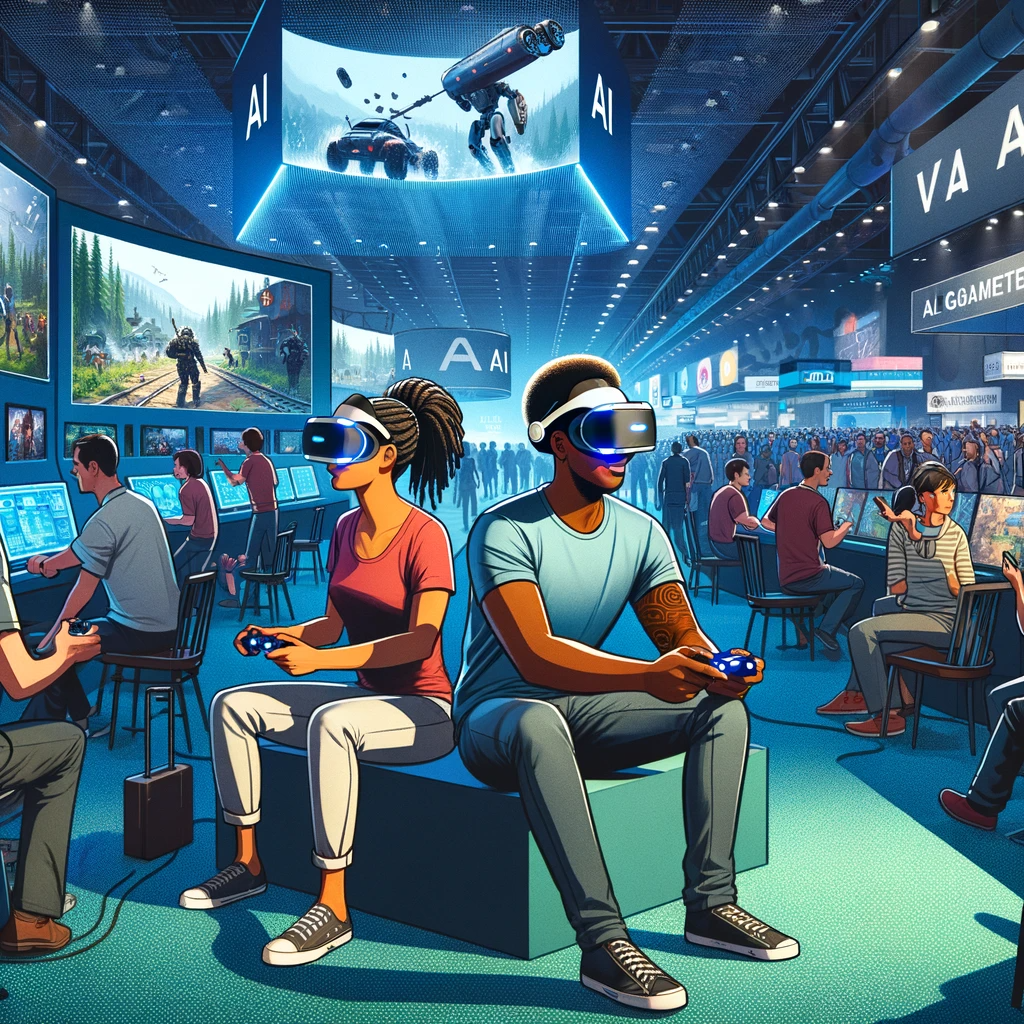Virtual Reality (VR), once a concept confined to the realms of science fiction, has now emerged as a cutting-edge technology in the modern world. It offers immersive experiences that transport users to virtual environments, ranging from simulated worlds for entertainment to training simulations in various industries. The current state of VR technology has seen remarkable advancements, with increasingly sophisticated hardware and software that provide more realistic and interactive virtual experiences.
Enter Artificial Intelligence (AI), a technology that has the potential to further revolutionize the VR landscape. AI, with its ability to learn, adapt, and make decisions, can significantly enhance VR experiences, making them more personalized, intuitive, and immersive. The integration of AI in VR opens up a world of possibilities, from creating dynamic, responsive virtual environments to tailoring experiences to individual user preferences and behaviors.
The central question this article explores is: How can AI technologies revolutionize immersive experiences and virtual worlds? We will delve into the synergy between AI and VR, examining how AI can enhance the immersiveness of VR experiences, the role of AI in personalizing and adapting VR environments, and the challenges and future prospects of AI in the realm of VR.
In this exploration, we aim to uncover the transformative potential of AI in virtual reality, setting the stage for a future where the boundaries between the real and the virtual are increasingly blurred.
Understanding Virtual Reality and AI
Virtual Reality (VR) is a technology that creates a simulated environment, distinct from the real world, where users can interact with 3D spaces and objects. The key components of VR include head-mounted displays, motion tracking devices, and immersive audio systems, which together create a sensory experience that can mimic reality or present a completely fantastical world. Over the years, VR technology has evolved from basic simulations to sophisticated environments with realistic visuals and interactions.
Artificial Intelligence (AI) involves creating machines or software that can perform tasks which typically require human intelligence. This includes learning, problem-solving, pattern recognition, and decision-making. AI has been pivotal in enhancing various technologies, making them more efficient, adaptive, and user-friendly.
The potential synergy between AI and VR is immense. AI can analyze and respond to user input in real-time, making VR experiences more interactive and personalized. The integration of AI into VR has the potential to transform how we interact with virtual environments, making them more realistic and immersive.
AI-Enhanced Immersive Experiences
AI has the capability to significantly enhance the immersiveness of VR experiences. By incorporating AI, VR environments can become more realistic and responsive. AI algorithms can simulate realistic interactions and behaviors in the virtual world, providing a more authentic experience.
In gaming, AI-driven VR advancements have led to games with environments that adapt to players’ actions, creating unique and unpredictable gameplay experiences. In education and training simulations, AI enables the creation of realistic scenarios that can adapt to the learner’s skill level, providing a customized learning experience.
AI also plays a crucial role in improving VR user interfaces and interaction models. AI can interpret user gestures and speech, allowing for more natural and intuitive ways of interacting with the virtual world. This enhancement in user interfaces is crucial in making VR experiences more accessible and enjoyable.

Personalization and Adaptation in VR
Personalization is a key advantage of integrating AI with VR. AI algorithms can analyze a user’s behavior, preferences, and feedback to tailor the VR experience to individual needs. This personalization can enhance the effectiveness of VR in various applications, from entertainment to education.
In educational settings, AI-powered VR can provide personalized learning experiences, adapting the content and pace according to the learner’s progress. In therapeutic applications, VR combined with AI can offer customized therapy sessions, adjusting scenarios and challenges based on the patient’s therapeutic needs.
Looking to the future, the potential for adaptive and personalized VR environments is vast. AI could enable VR systems to evolve continuously based on user interactions, leading to virtual experiences that are ever-changing and uniquely suited to each individual user. This adaptability and personalization could revolutionize how we use VR in various fields, from education and therapy to entertainment and beyond.
Challenges and Limitations
Integrating AI with VR presents several technical and practical challenges. One significant hurdle is developing AI algorithms sophisticated enough to understand and interpret the vast range of human behaviors and interactions in a VR environment. Current AI technologies, while advanced, are still limited in their ability to replicate the full spectrum of human emotions and reactions needed for a fully immersive VR experience.
Another challenge is creating VR environments that are not just visually immersive but also tactile and responsive. The AI needs to be capable of processing and responding to user inputs in real-time, which requires immense processing power and sophisticated programming.
Privacy and security in AI-powered VR environments are also major concerns. As these systems collect and process large amounts of personal data, ensuring the security of this data and protecting user privacy is paramount. There is a risk of sensitive data being misused or exposed in the event of a security breach.
Furthermore, AI in VR raises ethical dilemmas, such as the creation of hyper-realistic simulations that may blur the lines between reality and virtual reality. This raises questions about the psychological impact of such simulations and the ethical responsibilities of creators.
Future Trends and Innovations
The future of AI and VR technologies is poised for significant advancements. Future developments may see AI becoming more adept at understanding and mimicking human emotions, leading to more empathetic and interactive VR experiences. Innovations might also include improved haptic feedback systems, allowing users to ‘feel’ virtual objects, further enhancing the immersive experience.
The integration of AI with VR holds promising implications for various sectors. In healthcare, AI-powered VR could be used for more effective and personalized patient therapy and rehabilitation. In entertainment, it could lead to more engaging and interactive gaming and media experiences. For education, AI-driven VR could offer more immersive and interactive learning experiences, making education more engaging and accessible.

Conclusion
Exploring AI’s potential in revolutionizing Virtual Reality reveals a landscape brimming with possibilities. AI and VR together have the potential to significantly enhance user experiences, creating environments that are more realistic, interactive, and personalized.
As we look to the future, the integration of AI in VR presents exciting opportunities but also raises important questions about its impact on society. How will these technologies shape our perception of reality? What ethical considerations should guide their development and use? And how can we ensure that the benefits of AI-powered VR are accessible to all? The answers to these questions will shape the trajectory of these technologies and their role in our lives.
